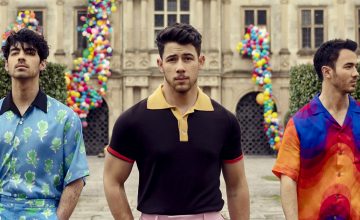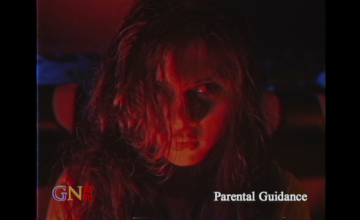Female anger has always been valid. And all cards on the table, no one knows that shit harder than femcees in the hip-hop game.
Rappers in the late ’80s and ’90s like Queen Latifah and MC Lyte set the blueprint for women who wanted to enter the scene. As Pitchfork points out, “Early women rappers reaffirmed new forms of feminine power and aired out grievances with street harassment, abusive relationships and their own foes, in a way no one else was doing at the time.” They didn’t just arrive in hip-hop to break glass ceilings—they were out for blood.
MC Lyte’s “10% Diss” or Queen Latifah’s “U.N.I.T.Y.” started the rise of female rage in hip-hop. Of course, it eventually trickled down to R&B through Ms. Lauryn Hill. Her iconic debut album “The Miseducation of Lauryn Hill” opens with “The Lost Ones,” a breakup anthem filled with Biblical overtones and 100 percent done attitude.
Rage tracks are hip-hop artists’ form of catharsis. And if DMX can go off with “X Gonna Give It to Ya,” Nicki Minaj’s birthright is to make “Monster” relevant with one verse.
“Before Nicki, there was a void,” says Akiba Solomon, senior editorial director of Colorlines, in her Pitchfork interview. “Nobody could eat off this. Now I think there’s more opportunity. That Rico Nasty can do stages like Coachella—that’s a big deal.” The rage and diss tracks blueprints were laid down in the golden age of hip-hop. With hip-hop’s current late 2000s resurgence, acts like Rico Nasty, Princess Nokia, Ashnikko and more are reaping the seeds Lauryn Hill and Queen Latifah have sown.
In our country, there are three types of Filipinas: mayumi, puta and bruha. Anyone breaking the mayumi mold is seen as lesser than. Desiring sex and to rage off is the most unladylike thing a Filipina can do. It’s unnatural, and for some conservatives, ungodly.
“People are more likely to use words like ‘bitchy’ and ‘hostile’ to describe female anger, while male anger is more likely to be described as ‘strong’”
“People are more likely to use words like ‘bitchy’ and ‘hostile’ to describe female anger, while male anger is more likely to be described as ‘strong,’” writes Leslie Jamison for The New York Times. “This anger isn’t about deserving. It’s about necessity: what needs to boil us out of bed and billow our dresses, what needs to burn in our voices, glowing and fearsome, fully aware of its own heat.”
The qualities Jamison mentioned are in femcees’ rage tracks. It’s what women want to scream at the top of their lungs—but they’re often silenced. Raw. Unapologetic. Cathartic.
If you’re a Filipina who has pent up, seething rage like me, I suggest you turn to femcees for solace. We lack figures in the media validating female rage. Let me tell you right now that your TV screen won’t answer your call. The truth belongs to these female rappers’ verses.
Here are some femcees who can start you off in your journey.
Princess Nokia
This Puerto-Rican rapper is so underrated for her range. She can give you soul today, then drop a hip-hop rage track tomorrow. It’s evident in her album “1992” that she’s a G.O.A.T. who knows what she’s all about. When she dropped her two albums “Everything Sucks” and “Everything is Beautiful” this 2020, it cemented her Gemini approach to the game: She can be sweet and angry. And boy, your speakers’ bass will shatter when she’s angry.
Rico Nasty
Rico is more than a featuring artist in Doja Cat’s “Tia Tamera.” Like she said, you can eat her like she’s candy but she’s not your buttercup. Her solo releases are proof of that. With an album like “Anger Management,” the punk spirit lives in her bars. She doesn’t only rap—she screams her verses. It’s not for sass’ name amen, it’s for the sake of getting her point across and being heard.
Ashnikko
This TikTok queen goes beyond that social media platform. In her sudden viral boom this year, Ashnikko proved three things; she’s cute, horny and is 100 percent done with soft bois ruining her life. Aren’t we all in the same boat? That’s why her tracks like “STUPID” and “SPECIAL” speaks to a young Gen Z girl tired of beam-me-up-soft-bois hitting her up.
Awich
Raised in Okinawa, Awich’s Japanglish verses are influenced by some braggadocio movements. Vogue reveals that she’s been rapping since she was 14. As she grew up, Tupac’s verses were her bible. It led her to create bars filled with dissent, pride and the struggle as she breaks Japanese hip-hop’s glass ceiling.
DB Tha Girl
DB is the secret weapon of hip-hop collective Baryo BerdeIn her track “Live Evil,” she wrote that when the angel and the devil talk, they speak with the same voice. This line is all about grappling with her frustrations and anxieties. Still, it’s a badass way to describe what she’s capable of.
Read more: Meet the female rappers dominating the underground scene
Her skills can drive the likes of Filipinx hip-hop figures like Rocky Rivera and DJ Rox off the Fliptop Festival 2020 main stage, so they can watch her light the crowd on fire. With bars about her self-worth, frustrations and other obstacles, DB is definitely a force to be reckoned with.
Read more:
What “Captain Marvel” teaches us about female rage
Weird is good: The female artists in media who pioneered strange
Here are 6 underrated frontwomen from local bands that we look up to
Still from Rico Nasty’s “Popstar”
























Comments